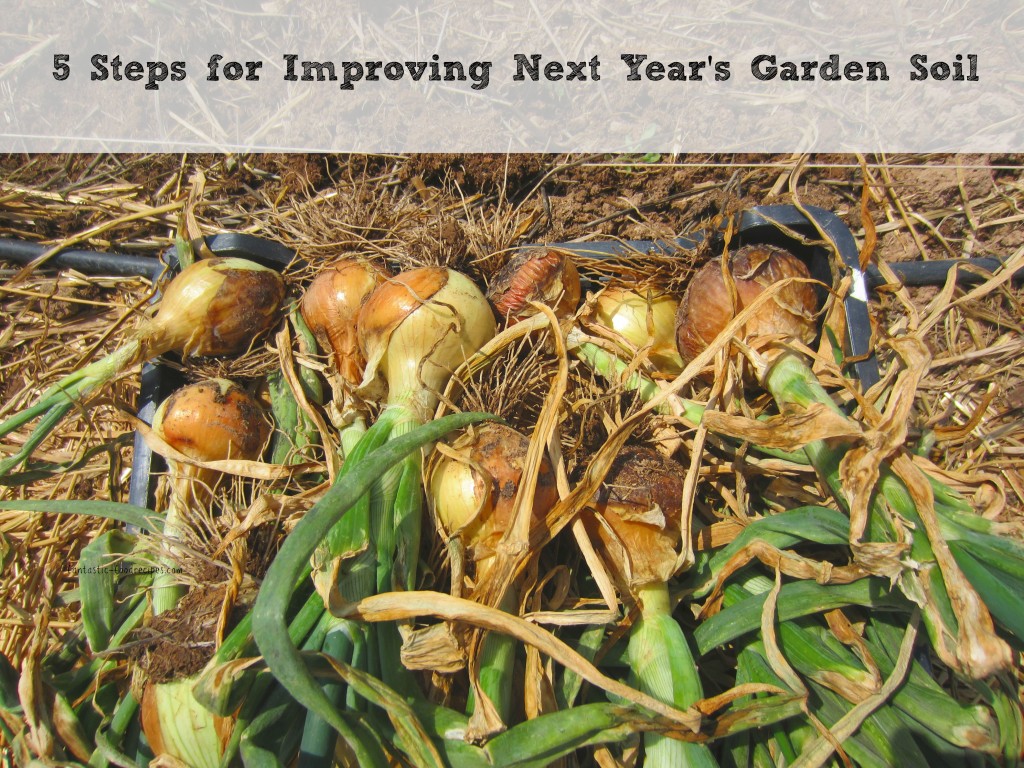5 Steps for Improving Next Year’s Garden Soil
Any garden task that can be done ahead of time, before you are ready to sow seeds and plant your starters is worth doing. Not only does it save you time in the spring, but tasks like improving the garden soil you are going to be growing vegetables in, needs time. New gardeners like to focus on the seeds they will be buying and everything that they will buy in order to ensure a good harvest, but seasoned gardeners know that it is all about the soil. Your garden soil needs to be healthy, rich in nutrients and perfectly balanced in order to be able to support the growth and health of your vegetables, otherwise the rest of your efforts will be wasted. Read further to learn about the 5 steps for improving next year’s gardening soil.
Here are five steps you should be doing now to improve next year’s garden soil.
Start A Compost Pile
If you don’t already compost, it’s time to start a pile. Compost takes time to break down into soil that is rich in the nutrients that your plants are going to need to thrive. Choose a dedicated corner that is away from the garden, but still easy to access, and use this season’s garden debris to get the pile going. If you already have a compost pile started, add a healthy amount of compost to the spent garden beds now, before winter sets in.
Plant a Cover Crop
Rather than leave your garden beds bare over the long fall and winter months, plant a smart cover crop that will grow throughout fall and stay rooted in the beds through winter. Doing this might seem like it would be detrimental to the soil, pulling out vital nutrients that plants will need in the spring, but cover crops actually replenish the soil and keep the topmost, nutrient packed layer from being blown away.
Rake the Garden Bed
Garden beds do become compact with time, especially when you tend to walk through your garden, compacting the soil layers even more. Deep and thorough garden tilling is not the best option for a garden bed, because you want to preserve the various garden soil layers. Instead, try raking the garden bed in order to ensure that the soil stays loose and crumbly, which is the ideal consistency you want when it comes time for growing season again.
Stem Soil Runoff
The fall is a great time to look over the condition of your garden bed, whether it’s raised or not, because there are always issues that can need addressing. Soil runoff is one of the most common problems gardeners face, and it happens in both raised beds and traditional beds. If there are areas of the garden that are vulnerable to flooding that can result in soil runoff, mulch or redesign those areas to prevent it. Raised garden beds should be checked for weak spots where soil may running off after heavy rains or overwatering.
Amend the Soil
Rarely is our soil perfectly balanced, not too sandy, balanced pH levels, or devoid of heavy clay. All of these gardening issues need addressing each year before we replant our gardens in the spring. The end of the season, when there is nothing in the soil left to disturb is the perfect time to amend the soil and round it out so that it is perfectly capable of supporting all types of plant life. Sand, peat moss, and lime or sulfur can all be added to the garden soil now.
If you like this post, see more DIY, recipes and tips on Pinterest.
Come follow me on Facebook and Twitter.




Leave a Reply